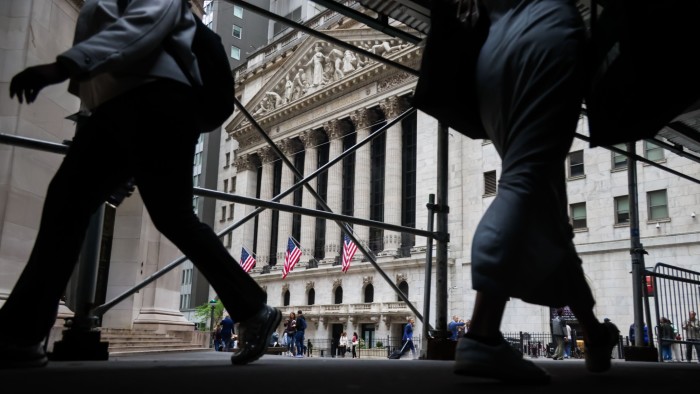Physical Address
304 North Cardinal St.
Dorchester Center, MA 02124
Physical Address
304 North Cardinal St.
Dorchester Center, MA 02124

Unlock the editor’s digest in free
FT editor Raula Khalaf selected his favorite stories in this weekly newsletter.
Author is the founding partner of Verdad Advisors and the author of ‘The Humble Investor’
The US Equity Markets have run a banner in the years after the terror of the Kovid -10 market. Nevertheless S&P 500 has been increasing by about 95 percent in the last five years, US -private equity companies are fighting for their frozen portfolio companies to sell profitablely – about 12,000, according to, according to, about 12,000, according to Research By cherry bakert. It will take about eight years to clear the existing list at the current exit speed of 1,500 companies a year.
Private equity investors have seen the distribution of capital collapse from 30 percent of net assets quality quality about 10 percent of the value of net assets, BainThe And the frustrated investors of the funds are noticed in the secondary market to sell Yale and Harvard-Stake, while “over allocation” and “above-rate” investment in the resource category is spreading.
The most proximal of this roadblock is the excessive enthusiasm of the 2021-22 period in private markets, when the assessments are increasing and the interest rates are still around zero. Private Equity Groups tried to sell everything they bought before 2020 and then paid a lot of prices for new deals back to the market. The contracts between private equity managers reached about 45 percent of the total exit in 2022, According to Harvard Law School researchThe
And now we are feeling the hangover from this deals binz. Pre-2020 deals that have not been sold during this period are generally defective, when new deals starting during that time were made in high evaluation-and with business models that the expected interest rate is low-which is very difficult to exit today.
Deep problems are being revealed with the resource class as the exit is dry. Private equity was Apple of most allotments in the 20’s. The fund rationing seemed involuntarily increased and the transaction between the private equity managers became a larger part of the exit. However, the allotments began to exceed the market size. By me AssumptionAddressable market for private equity-it can buy companies-this is about ten-third of the public equity market size. Nevertheless allotted about 40 percent, where roughly Yel’s endomen Is, the growing has become common. It presents a huge overall space in a very simple resource class.
With Equity According to the pitchbook data, fundraising to gain an acute drop experience in 2021 and at a slower pace in 2021, this process has begun to revert. Lessing in the industry causes less departure as a result of low funding, resulting in low evaluation and worse return. Then the allocation reduces the allocation more.
If there were other natural buyers for the personal equity inventory of the property, they would all be well. However, large stocks in the United States have been rich, small and microcap shares have not been performed. Since the value of 50 to 60 percent of the private equity agreement falls within the square within the microcope range of the public market, according to Rope and gray dataThe primary public offer market is not currently interesting for many companies.
Financially, private equity-backed companies are under the strain. The operating model of the industry depends a lot on the leverage. As 2024, the personal credit yield of the leverage bayout deals has risen to 9.5 percent, the pitchbook reports. The huge majority of this Debt is the floating rate. I Assumption For many portfolio companies, the Ebitda-Debt’s ratio has now exceeded eight times. And a significant part of this business is negative in cash flow. This is the logical result of an environment where cheap debt enables excess price deals and enables masked operational fragility. And since these businesses are already under excess pressure on the debt, they may not even buy an increase. Moody Report The default rate for private equity-backed companies around 17 percent than double non-private equity firms.
Private equity sponsors are playing for time by re -finishing with new structures or selling their companies into the so -called continuity fund to retain resources. However, if high priced debt equity value or economic growth is slow, kicking on the street can be a dangerous strategy.
Over the years, personal equity cannot make any mistake. But now it is starting to look like a huge money net. It has been skilled in S&P500 for more than one, three and five years, According to McKencyThe
The Sens Camma about the private equity is silent, but the decision is being re -written. It is not the question of whether the model is being broken. It is quite wide enough to get to everyone trying to move to everyone.